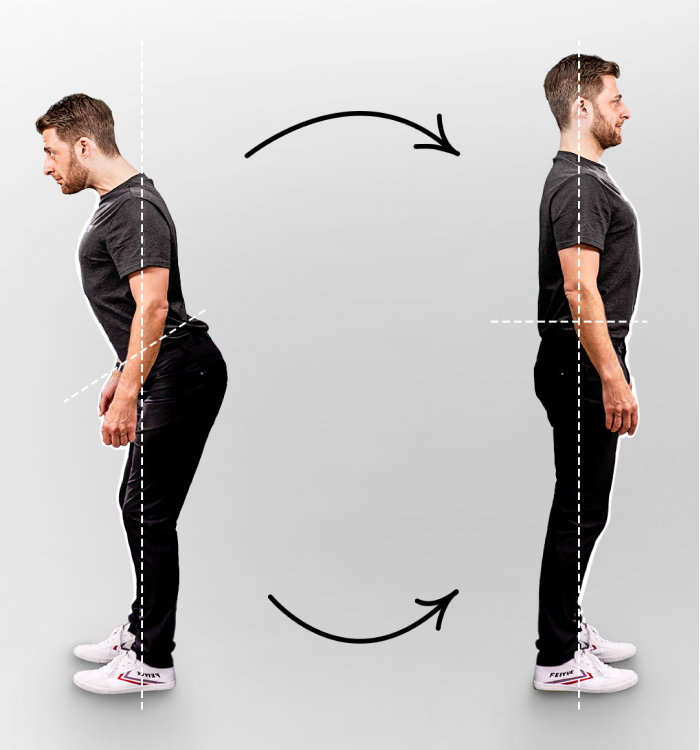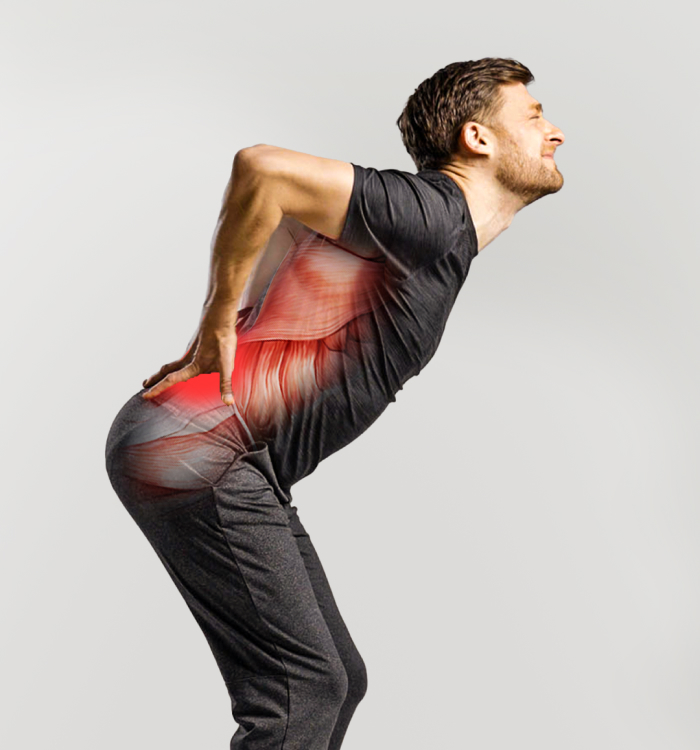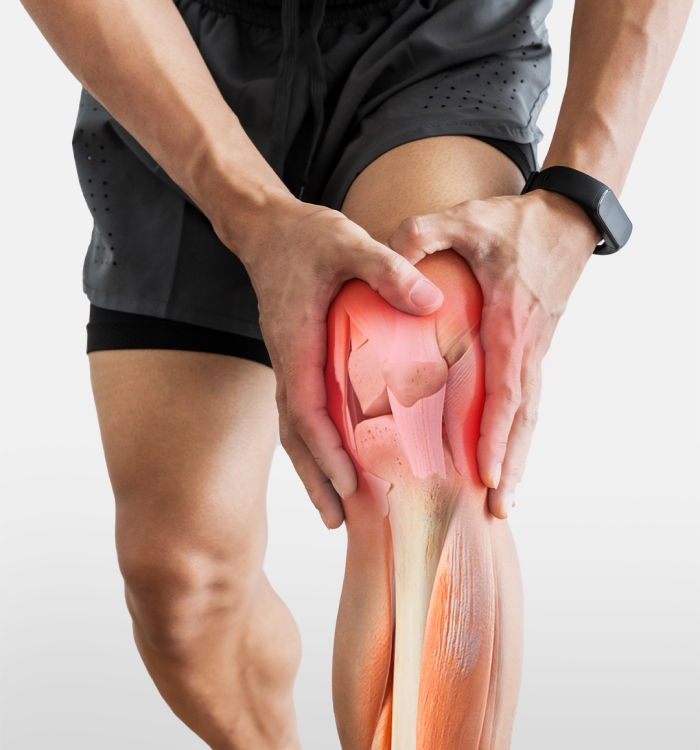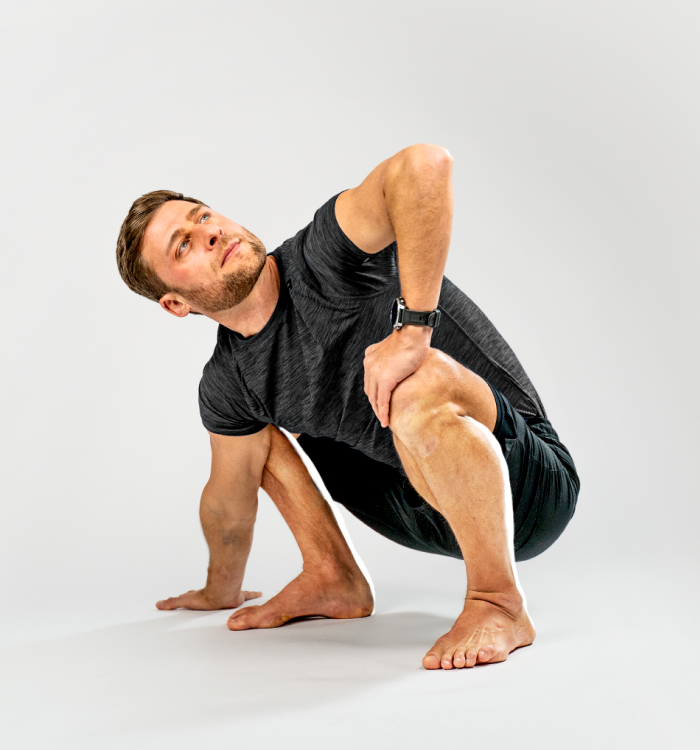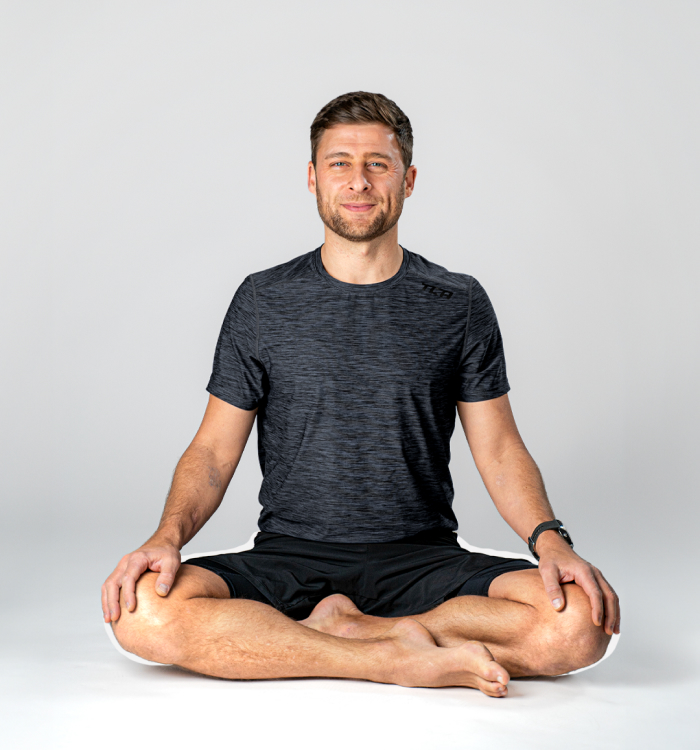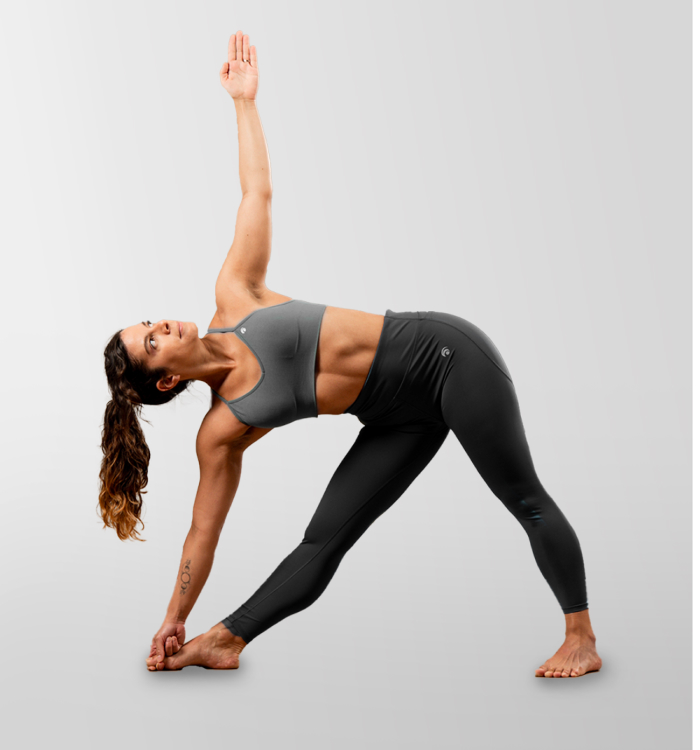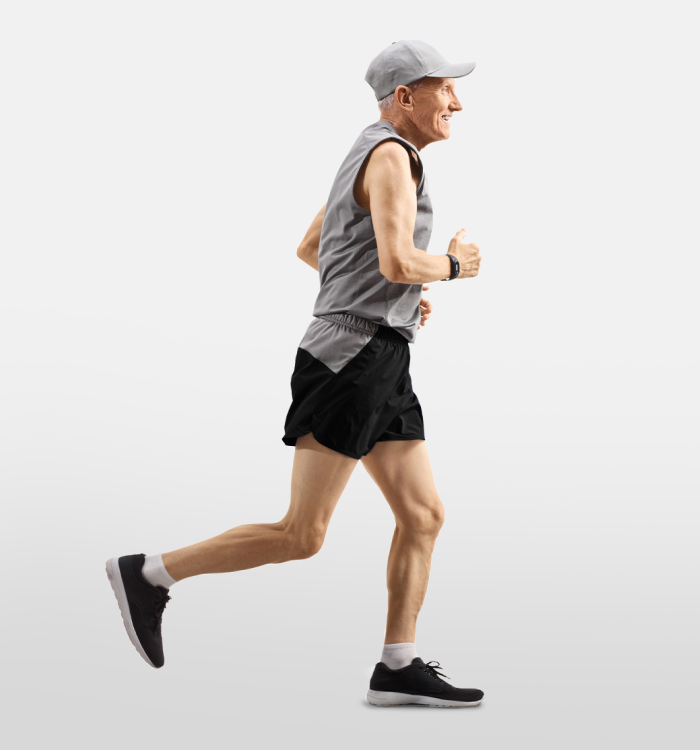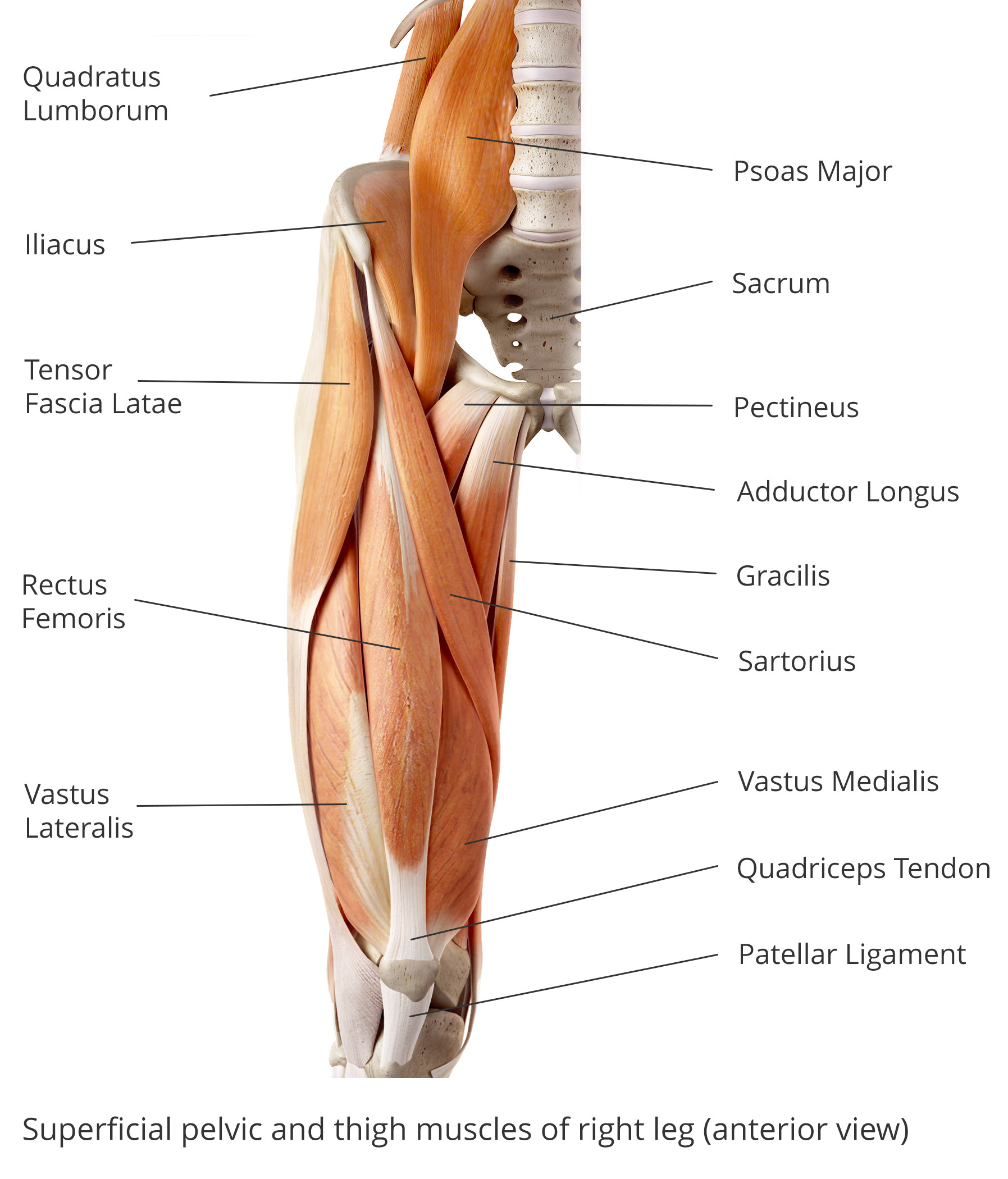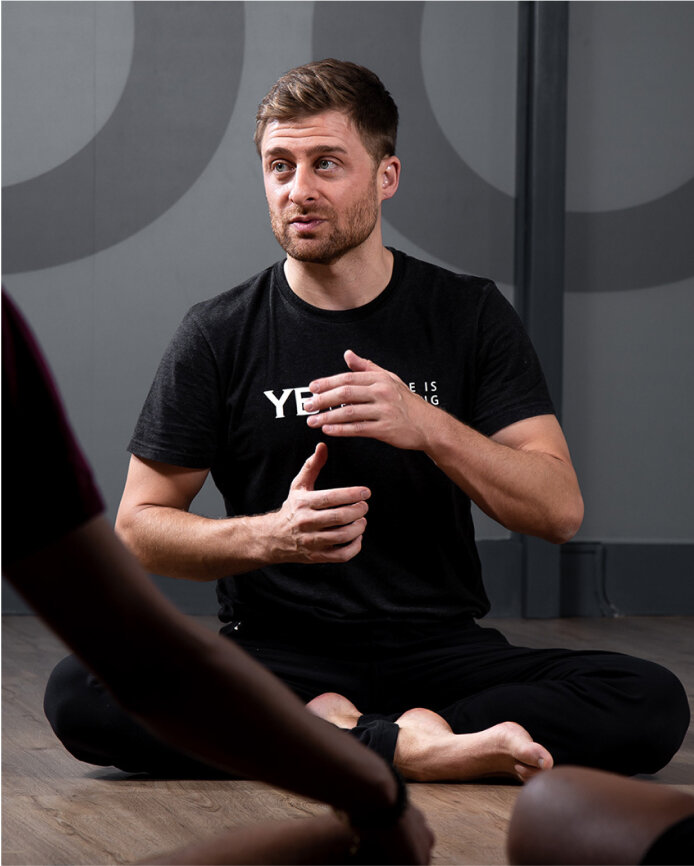Huge Flexibility Gains | Squat, Sit, and Overcome Injuries
Huge Flexibility Gains | Squat, Sit, and Overcome Injuries
★★★★★
1,800+ Reviews on Trustpilot
If you suffer from tight hips that affect your posture, your ability to squat, and your yoga practice, there’s a very good chance I can help you. I’m leading an online 21-Day Hip Opening Challenge to blast through years of stress, tension, and tightness.
Benefits of Hip Flexibility
Improve Your Posture
Tight hips lead to a hunched back while sitting, and can also create anterior pelvic tilt while standing and walking. Multiple factors influence posture, but hip mobility is at the top of the list for improving it – and you’ll notice the changes within weeks.
Reduce Back Pain
Did you know that one of your hip flexors, your psoas muscle, attaches to your lumbar spine? That means tight hip flexors can directly pull on your lower back, pitch you forward into a sway back posture, and contribute to injuries and pain especially during exercise. A surprise benefit for many hip stretching students is a measured and rapid reduction in back problems.
Reduce Knee Pain
Have you ever watched runners at the finish line of a marathon? Notice how they swing their feet from side to side? That’s because when you’re tired, your mobility takes a hit, and tight hip flexors make it hard to stride properly. Why does this matter? Abnormal walking and running patterns put stress on your knee ligaments and cartilage in unusual ways. This also shows up when squatting. If your hips are tight, you end up putting too much pressure on your knees instead of loading your hips naturally. The good news is that hip stretches can improve your movement patterns, reduce knee pain, and even prevent injuries.
Squat Deeper
When your hips are tight and you try to squat, either your heels pop up or your knees buckle inward. Both situations cause you to lose power and strain your joints. Squats are complex movements, but the key muscles involved are your hamstrings, glutes, and adductors. We’ll focus on deep stretching to target all these muscles.
Sit Cross-Legged
Squat depth usually gets all the attention, but being able to sit cross-legged on the floor without your knees popping up and your back rounding is just as important. With the right stretches, you’ll be able to sit on the floor with relaxed knees and a straight spine.
Enjoy Working Out Again
It’s hard to get excited about a gym workout, a yoga class, or going for a jog when your joints ache and struggle with basic range of motion. As mobility improves, many people find renewed joy in exercise they thought was gone forever. You too might learn that when you can move better, you’ll enjoy moving more.
More Speed, More Power
If your hip mobility is limited, it restricts your hip extension, running gait, and your ability to squat and exert force. Mobile hips allow for greater physical performance, and that’s why athletes, from runners to powerlifters, obsess over hip flexibility.
The Modern Tight Hip Problem
In 2003, I moved to Thailand and began my yoga teaching journey. The very first thing that every Western yoga teacher notices in Southeast Asia is that tight hips are very rare. Why? Natural movement patterns are still very common in the region. Squatting is a normal part of daily life for most people; there are squat toilets, temples have no chairs, etc.
But what about you? When was the last time you dropped down into a full squat to wash your laundry, peel a carrot, or use the bathroom? The answer is probably never, and that is a huge part of the modern tight hip problem. The average person living in a Western country rarely flexes their knees past 90-degrees or squats at all.
Think about it. You wake up, roll out of bed, and sit down on a knee-high toilet. You make breakfast and sit on a chair or a stool that is at bum-height (or higher). You get into a car (again in a seat), arrive at work and promptly sit down in an office chair. The muscles and tissues that affect flexion and extension, adduction and abduction, internal and external rotation are barely used at all.
Interestingly, this is not true for children.
Most kids sit on the floor, squat to play with toys, and move through a full range of hip motion throughout the day. By age 10, most kids are starting to move more like adults (meaning less) and they begin to lose flexibility. Without training, by our teenage years, most of us are just as stiff as an adult. That’s the bad news. The good news is that you can change this. It doesn’t happen overnight, but with consistent practice, you can make massive gains in flexibility.
The Danger of Tight Hips
Many people assume that tight hips are simply inconvenient. You can’t sit comfortably on the floor, many yoga poses are out of reach, and you get fidgety and uncomfortable in the car and on planes. But it’s much worse than that.
When your hips are tight, you automatically adjust your movement patterns to make up for it. When you squat, your feet turn out and your heels pop up. When you sit cross-legged, your back hunches up into a ball. When you run, your hips don’t fully extend, so your running gait turns into a clumsy waddle, especially when you become fatigued.
All these movement workarounds contribute or even cause chronic back and knee pain, among other problems. When you’re walking, sitting, and running around with poor posture, you’re simply more prone to injury.
What Do Tight Hips Look Like?
Hip Flexibility Involves 20+ Muscles
Most people don’t realize that hip joint mobility is affected directly or indirectly by more than 20 different muscles, including various hip flexors, extensors, rotators, abductors, and adductors. And this doesn’t even take into account the fascia.
True hip mobility is complex and multifactorial, so a mobility program has to include long-hold poses to access all those muscles and you need to practice a variety of poses to hit the various areas in different ways.
Are there go-to poses we come back to again and again? Of course, but there are also strange (and uncomfortable) variations and modifications that take things to another level.
My Embarrassingly Tight Hips Story…
Six months before I began my yoga journey, I was invited to a raw food lecture at a yoga studio in Manhattan. There were no chairs, obviously, so I spent 90-minutes sitting (or attempting to sit) cross-legged on the floor. My knees were at chest height, my back was hunched up, and I was literally sweating with discomfort.
At the time, I’d never thought twice about flexibility—and especially not hip flexibility—but as I suffered through the lecture, I noticed a bunch of people much older than me were able to cross their legs with their knees on the floor, and some were even resting in Half Lotus or Full Lotus without any effort. They weren’t faking it either, they were truly relaxed sitting on the floor, while I was in dire misery.
So, what happened next?
At first, nothing. I just felt bad about myself, concerned that I’d let myself go and that my daily gym workouts were somehow misguided (which they were!). Six months later, I started practicing yoga at a local studio, and the classes were amazing—but my hips were still like two blocks of ice. Nothing new there.
The big shift in flexibility happened when I learned the principles of the Science of Stretching®. I learned that muscle tissue stretches best under passive tension and that the nervous system plays a huge role in the stretch reflex. If that all sounds like gibberish to you, I’ll make it very simple: I learned that for flexibility training, long-hold, passive poses, with specific breathing patterns were the only way to go.
And it worked. Flexibility gains are not as quick to achieve as strength gains, but they last so much longer. Once you open your hips, they’ll stay open unless you start doing repetitive stress exercises or stop stretching altogether.
That’s why I love the Science of Stretching®. It’s like a flexibility savings account. Every time you deposit five minutes in a long-hold stretch, it adds to your overall mobility and flexibility. I went from not being able to sit on the floor with my legs crossed to being able to sit in Full Lotus Pose for an hour straight, practice deep lunges with ease, and eventually put my foot behind my head (this is not really useful or even recommended, but just something that happened).
My 21-Day Challenge to You
My challenge to you is very simple. Join me for 15 minutes a day, every day, for 21 days, and let’s unlock your tight hips. We’ll stretch, breathe, chat about yoga and nutrition, and practice together. I’ll show you my own favorite Science of Stretching hip opening stretches, and you can practice right along with me.
Students contact me every week wanting to join my classes, but these days, most of my teaching is restricted to intensive training courses—sometimes on the other side of the world—that most people are unable to attend. This short course is my attempt to share my practices and my best stretching knowledge with you, as if we were hanging out in my studio.
What is the Science of Stretching?
The Science of Stretching is a systematic approach to flexibility training that I developed after studying and comparing notes with some of the leading yoga teachers, physiotherapists, and movement specialists in the world. The truth is, experts argue about the best method to train flexibility, but what I’ve found is that for people who need flexibility—yoga students, gymnasts, and dancers—the consensus is pretty much the same.
For flexibility gains, you need to supplement whatever you’re doing with long-hold passive postures that target specific areas. When I teach, I also pair it with a down-regulating breathing pattern to assist in shutting off the stretch reflex and encouraging relaxation and release.
I introduced the Science of Stretching in 2007, and it has since been practiced by more than 80,000 students worldwide. At my yoga studios in Barcelona, we teach regular, guided classes, and they are among the most popular for one simple reason: they work.
The Science of Stretching is not a complete practice or exercise routine. It’s specifically focused on one thing—flexibility—and it’s meant to complement whatever else you’re doing for exercise.
Join the 21-Day Hip Opening Challenge
Instant Access | Online Course
BENEFITS
- Huge flexibility gains
- Deep relaxation
- Tension release
- Personalized teaching
- Direct access to Lucas Rockwood
HOW IT WORKS
- 15 minutes per day x21 days
- Daily video classes
- Answers to all your questions
- An amazing, supportive community
- Guaranteed results
FORMAT
- Daily video session
- Lifetime access to all videos
REQUIREMENTS
- Smartphone or tablet
- 15 minutes per day
- Yoga mat
FREE! Bonuses ($119 value)
Included with every order
Food & Flexibility Masterclass ($29 Value – FREE!)
In the same way body builders eat lots of protein and endurance athletes suck down sugary gels, there are specific foods that help (and others that hinder) your muscle and connective tissue growth and recovery. For many people, small dietary shifts or the addition of some very simple, inexpensive vitamins can make a huge difference.
Format: mp4 video
30-Days of Personal Coaching (w/ Lucas) ($99 Kit Value – FREE!)
Sometimes you’ll have one burning question or concern that is keeping you stuck, so to solve this, you’ll have direct access to me (Lucas) via Instagram direct message for 30 days. Ask me questions, send pose photos (if needed), and I’ll help you stay on track. Note: please allow 48 hours for responses during high volume times.
Format: Instagram direct message
100% Satisfaction Guarantee
If for any reason, you’re unhappy with this course, just email us for a full and prompt refund anytime within a year of purchase. We stand behind all our programs unconditionally because our customer success and happiness rates are so high. We’re responsive, reliable, and we’re here to help.
Customer Reviews
★★★★★
“My flexibility has noticeably increased”
The poses are challenging yet doable with real results. Being able to have your questions answered and also see other people’s questions and comments is extremely helpful. Highly recommend!
– Elizabeth Wrazien
★★★★★
“Challenging but achievable”
I learned a lot. I still have a long way to go in improving my flexibility, but this course gave me hope!
– Mags
★★★★★
“Sitting comfortably on the floor for the first time in decades”
I’ve “stretched” and done yoga for decades but never really improved my flexibility. After 21 days of the hip opening challenge, I can sit reasonably comfortably on the floor with my legs folded in front of me. Haven’t done that for 30 years. I love it.
– Chad
★★★★★
“The 21-Day Hip Opener Challenge was a great motivator for me to do some self-care every day”
I have pretty consistent low back stiffness so I thought working on my hips would be a great way to relieve some of that, and it was!
– Kayla McIntosh
★★★★★
“This course was a perfect blend of yoga poses and anatomy”
Lucas has a calm and positive demeanor that encourages the students even when their bodies are requesting a change. The pose variety accessed all hip structures and was a balanced blend of stretching and stability.
– Erika Meier
★★★★★
“I have always had flexible hips until this year when I started PT”
I love hip opening poses so naively I didn’t think I’d learn any new poses. I could not have been more wrong. Each day, Lucas not only taught new poses but also new information that was engaging and fun.
– Melanie Crow
★★★★★
“21-Day Hip Opening is making my whole body feel great!”
I’m doing the 21-Day Hip Opening program and am half way through. Already my whole body feels better! Especially my arthritic knees, believe it or not. Lucas patiently and clearly explains the poses and provides multiple options for different ability levels, which is very helpful. This program is just awesome.
– Jess
★★★★★
“Love the sessions and the explanations that Lucas gives”
I signed up for the Hip Challenge as I am trying to get range of motion and relieve pain in a hip that the Docs think is in need of replacement. The program has given me more ROM and less pain…and I will repeat the course as it has been a great help!
– Mary
★★★★★
“I highly recommend this to anyone with tight hips”
My hips were so tight that every time I stood up from my desk or got out of a car it took about a minute to stand fully straight up and I was in pain. After doing the first few days of stretching, it made a difference. Now that I have completed the 21 days, I have much better mobility and almost no pain in my hips.
– Joshua
“My flexibility has noticeably increased.”
The poses are challenging yet doable with real results. Being able to have your questions answered and also see other people’s questions and comments is extremely helpful. Highly recommend!
– Elizabeth Wrazien
“Challenging but achievable.”
I learned a lot. Still have a long way to go in improving my flexibility, but this course gave me hope!
– Mags
“Sitting comfortably on the floor for 1st time in decades.”
I’ve “stretched” and done yoga for decades but never really improved my flexibility. After 21 days of the hip opening challenge, I can sit reasonably comfortably on the floor with my legs folded in front of me. Haven’t done that for 30 years. I love it.
– Chad
“The 21-Day Hip Opener Challenge was a great motivator for me to do some self-care every day.”
I have pretty consistent low back stiffness so I thought working on my hips would be a great way to relieve some of that, and it was!As a mother of four, who stays home and homeschools
– Kayla McIntosh
“This course was a perfect blend of yoga poses and anatomy.”
Lucas has a calm and positive demeanor that encourages the students even when their bodies are requesting a change. The pose variety accessed all hip structures and was a balanced blend of stretching and stability.
– Erika Meier
“I have always had flexible hips until this year when I started PT.”
I love hip opening poses so naively I didn’t think I’d learn any new poses. I could not have been more wrong. Each day, Lucas not only taught new poses but also new information that was engaging and fun.”
– Melanie Crow
“21-Day Hip Opening Making My Whole Body Feel Great!”
I’m doing the 21 day hip opening program and am 1/2 way through. Already my whole body feels better! Especially my arthritic knees, believe it or not. Lucas patiently and clearly explains the poses and provides multiple options for different ability levels, which is very helpful.This program is just awesome.
– Jess
“Love the session and the explanation that Lucas gives..and great coaching ... A winner”
I signed up for the Hip Challenge as I am trying to get range of motion and relieve pain in a hip that the Docs think is in need of replacement. The program has given me more ROM and less pain...and I will repeat the course as it has been a great help!
– Mary
“I highly recommend this to anyone with tight hips.”
My hips were so tight that every time I stood up from my desk or got out of a car it took about a minute to stand fully straight up and I was in pain. After doing the first few days of stretching, it made a difference. Now that I have completed the 21 day, I have much better mobility and almost no pain in my hips.
– Joshua
Frequently Asked Questions
About Me
I’m a yoga trainer, studio owner, podcaster, and corporate wellness trainer. When I started practicing yoga, I couldn’t touch my toes, but within a very short period of time, I completely transformed my body and my life.
It frustrates me that, for the most part, the ‘how to’ teachings in yoga are horrible. Most yoga teachers do a great job of showing you how flexible they are, but they are lousy at explaining how they got there.
Since I’m not naturally athletic or flexible, the question of ‘what is the best way to make progress?’ has always been my focus. Over time, I’ve uncovered some very simple, yet powerful truths that I know will make a huge difference for you.
To date, I’ve trained more than 7,500 yoga teachers. I have 2.5 million listens of my wellness podcast. I’ve spoken on the TEDx stage, written a six-part series for Yoga Journal, and been interviewed on 16 different radio and television programs. In the corporate space, I train for companies like Meta and Noom. I’m also a dad, a nutrition fanatic, and a serial entrepreneur with an obsession for learning.
About Me

